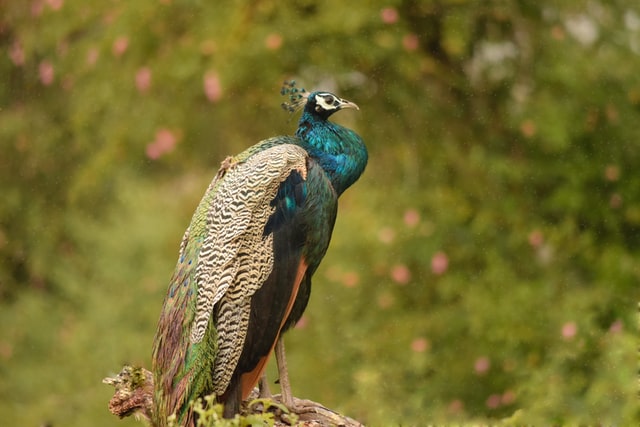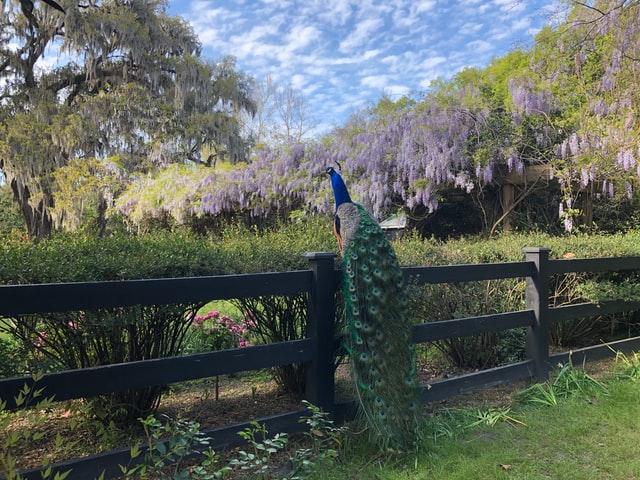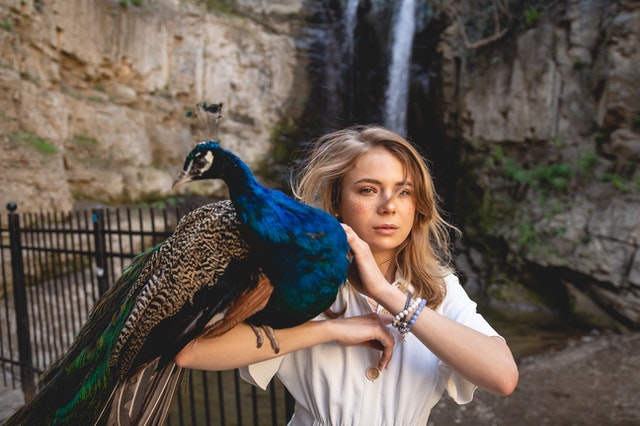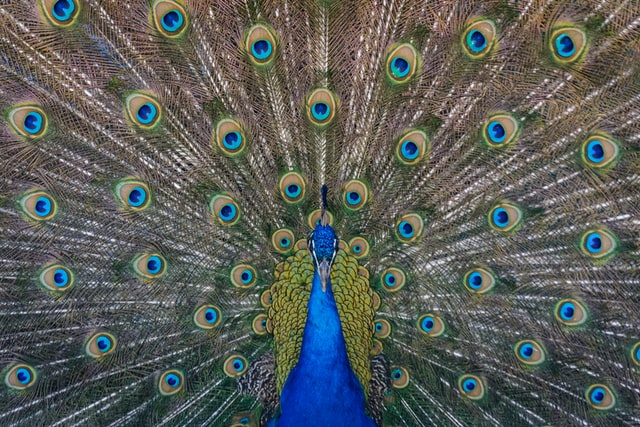Lately, it’s been known that many farmers and even urban-based people are picking a peacock as a pet. Whether for their beautiful colors or fame as ornamental birds, they are being chosen lately. Here we will tell you all that there’s to know about peacocks as pets.
Everything you need to know about peacocks
For starters, we shall know that peacock is only the name for males, peahen is how you call the females. As a species, they’re called peafowl- although you might hear someone call them a muster, ostentation, pride, or a party of peacocks.
Another fact about peacocks is that they are really territorial; they’re not good being kept close together. On the other hand, peahens are much more peaceful; they actually enjoy each other’s company. On the other hand, they get along with their bird cousins, chickens, and turkeys.
Types of peacocks
Three peacock species derivate in all the pretty colors we like to see them. They all come from pretty different origins. Although peafowls have many similarities, you can still see some differences between species, especially in their colors and feathers.
The blue peacock
Also called Indian peacock, as their name indicates, this breed is from India and Sri Lanka; they’re used to warm weather, but they can live in cold weather. Peacocks prefer to live amongst females than other males. They can grow up to 35–50-inches and have about 60-inches train of tail feathers, and their colors are primarily metallic blue-green.
Peahens of this species are green and brown and are almost as big as the male but lack the train and the head ornament. This peafowl becomes an adult at age three. However, some males have been known to breed as early as age two.
The green peacock
Also called Javanese peacocks, they are found from Myanmar to Java. As well as the blue peacock can grow up to 35–50-inches and have about 60-inches train of tail feathers and green and bronze body feathers. Unlike blue peacocks, they instead forest and warmer weather since they can’t survive in colder climates.
Green peahens and their blue cousins are green and brown and are almost as big as the male, but lack the train and the head ornament. They must be kept apart from other fowl in captivity because of their aggressive behavior.

The black peacock
Also known as Congo peacocks, they prefer forested environments like their home, the Democratic Republic of the Congo. This species was discovered in 1936 after a search in 1913 to find a single feather, thanks to its unique color. They’re the largest species of peacocks in Africa and also an endangered species.
Both peahens and peacocks grow to between 25 to 28 inches in length by adulthood. The peacock is mainly blue and green with a short rounded tail. The peahen is reddish and green with a brown topknot, unlike her cousins with no head ornaments and no colored feathers.
What can I hope for having peacocks as pets?
When talking about having a peacock as a pet, there are two possibilities. The first one is that you get them as adults, in which case we’re sad to tell you that they won’t be like any loving pet. Instead, they are more like roommates- they’ll be happy to have someone to clean and feed them, but they’ll very hardly show any emotion to you.
The second one is that you get them as babies- or peachicks, in which case you actually have a chance for them to be a loving pet. If you take care of them and feed them since they’re born, they’ll see you as their mom. They’ll behave kinda like a cat, getting in your lap for treats or letting you pet them.
Pro’s and con’s of having a peacock as a pet
There are many pros and cons of having a peacock as a pet, and here we will tell you everything there is to know before you decide. Still, we must say that these are exotic pets, and their care and preferred environment are special. So if you’re planning to have one as a pet, please learn as much about them as possible you can before getting them.
Peafowls diet
Peafowls are omnivores, which means that they will not only eat what you provide them, but they will also find their own food, anything from some kind of bugs to snakes; yes, they can eat snakes. They can also eat other birds’ food, which means you can feed them chickens or turkeys’ food.
They get used to their home
When kept in captivity for a large amount of time, they learn to live in their given space. So you can forget about them escaping to your neighbor’s yard for tastier food — although we advise always keep them in spaces with big fences. We recommend you to have a fence larger than 6 ft tall and a roofed area, to keep them safe from the elements.
In other words, this means that you don’t really have to worry about having an annoying pet for the neighbors, and you can still be proud of this gorgeous creature.

Their beautiful feathers
They are beautiful to look at, and if you’re a bird lover or a proud parent of your peacock, you might find their feathers interesting to collect. For your luck, they change feathers when winter comes, so you will always have a way to keep your collection going. In no time, you’ll be packed with beautiful and different-sized, colored, and patterned feathers to add to your collection.
Breeding them makes them stronger
If you have different species, you can be chill with them breeding together since species hybrids are often stronger and more resistant than pure breeds. So, suppose you mix a Congo peacock with an Indian peacock by example. In that case, you might get amazing, never seen colors in their feathers. Another benefit is that those peacocks have better resistance to the elements.
You must have a lot of space
You must have enough land for them to wander around. Peafowls like to walk and explore nature, and keeping them from scaping will be very hard in a small area. Added to this, this will be a problem if you want more than one peacock as a pet since they’re very territorial. Finally, you must have at least 80 square feet per peacock. This will also prevent diseases from being spread between peafowls.
They can love you like other pets
They can be affectionate; when you raise them from peachicks, they’ll see you as a maternal figure. They’ll trust you as part of their peacock party and- besides the love they can show you -. This will assure that they won’t escape their home.

They are loud and noisy
As we said before, they are very, very loud; not only their usual sounds are really high, but during their mating season, they scream. So maybe it will last day and night until the very last of them have mated. This may not only be annoying to you but also to your neighbors, so you should keep that in mind if you’re sensitive to noises.
Predators might be hard to handle
They have a lot of natural predators. So you might find it very dangerous to have a peacock as a pet in an area where there’s a lot of foxes, coyotes, and even dogs. However, the way to keep them safe is by keeping them high. So it’s essential to keep this in mind if you cannot give them high dry and warm scapes.
Overall health
Peafowls must be dewormed every two months. Products like Piperazine, IVOMEC, or Ivermectin cattle wormer can do the trick. Still, they can also get external parasites like mites, lice, or chiggers, which can also cause severe diseases to your peafowls. Since they’re not common pets, there’s no established vaccine for them.
What about urban peafowls?
It’s true; there are urban peafowls. The largest amount of urban peafowls can be found in California. Since they’re protected there, the population is larger than you might imagine. Unlike farm peafowls, you can’t treat these peacocks as pets. Yes, they might be used to people, but they’re not used to be fed, touched, or chased.
While it’s true that peafowls can develop love, they cannot be domesticated. You cannot house train them. They will always keep their natural instincts of flying, wandering, exploring, and having them is a huge responsibility. You must keep everything we have said here in mind before you decide to have peacocks as pets.
However, if you have the space and resources to keep them healthy and happy, never forget that you must learn about them every day, their needs, and their behavior. And if you’re lucky to have them mate- and trust us, they will- you’ll get to have them as peachicks and enjoy their full trust and love as pets. This is the perfect development, as they can think of you as your mother.





